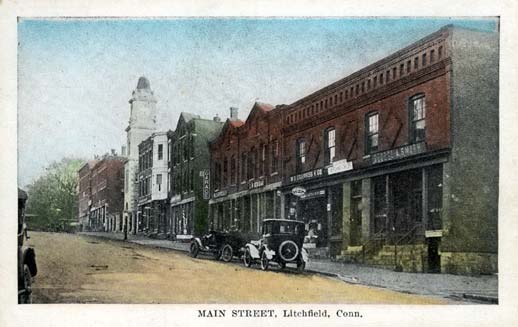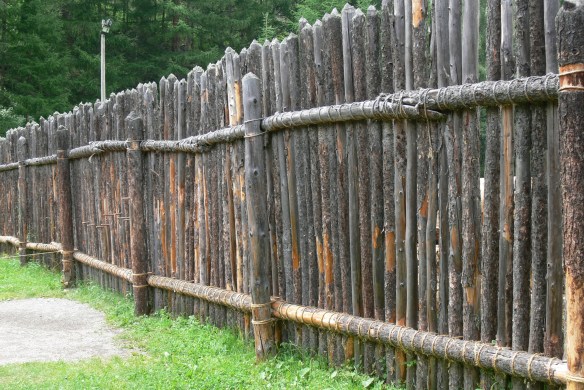
Runners making the final turn from South Street to West Street experience the surge of adrenaline that comes with the wall of sound rising from the crowds along the sidewalk and the Green. The Green, the center of community activity in Litchfield, has not always been the pastoral heart of the town.

An 18th century map of Litchfield drawn by Ezra Stiles. Courtesy of Yale University.
Like many Connecticut communities, the Green began as simply a very wide road. In Litchfield, it was Meeting House Street, and was what is now East and West Streets. The western portion of this road was 264 feet wide, with the eastern portion stretching to 330 feet wide. (Colonial roads were much wider than our modern roads, in part because the lack of effective road building tools meant that large boulders and tree stumps would be left, so travelers needed ample space to get around them.) In the roadbed where Meeting House Street intersected with North and South Streets stood the Congregational Church. In 1752, the county courthouse was also built in the center of the road, and the sheep and pigs of local farms milled about.

Lyman Beecher, minister at the Litchfield Congregational Church from 1810 to 1826.
At that point the town did not have a centralized commercial district, but in the coming decades, especially during the Revolutionary War, businesses in town clustered around this intersection. An 1814 map of town shows a great deal of activity on North Street, with the courthouse having been moved to the southern side of West Street. The Congregational Church – with Lyman Beecher as minister – still stood in the intersection. This is commemorated with a monument that today is in the southern portion of the Green; there was, however, no grass there in 1814.

The Litchfield Green,. 1907.
What we would recognize as the Green began to emerge after a new Congregational Church was built outside of the intersection in 1828-29. The town decided to grade its central area to create a commons. This was divided into three sections, East, West, and Center Parks. By the time of the 1851 county centennial, this had become the major meeting place in town. The early 20th century would see transformations of the Green by Litchfield’s Village Improvement Society, but for the new sidewalks, lighting, and trees that came and went, the Green had become the heart of town, which it will be tomorrow when approximately 1,500 await the start of the 40th Litchfield Hills Road Race.
Good luck to all runners!
For more on the development of the town of Litchfield see Rachel Carley’s book Litchfield: The Making of a New England Town.
For more information on the history of the Litchfield Hills Road Race, see Lou Pellegrino’s book A History of the Litchfield Hills Road Race: In Smallness there is Beauty (now available at the Litchfield Historical Society).



























